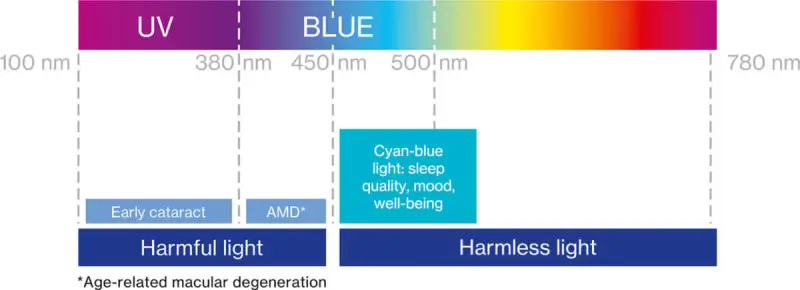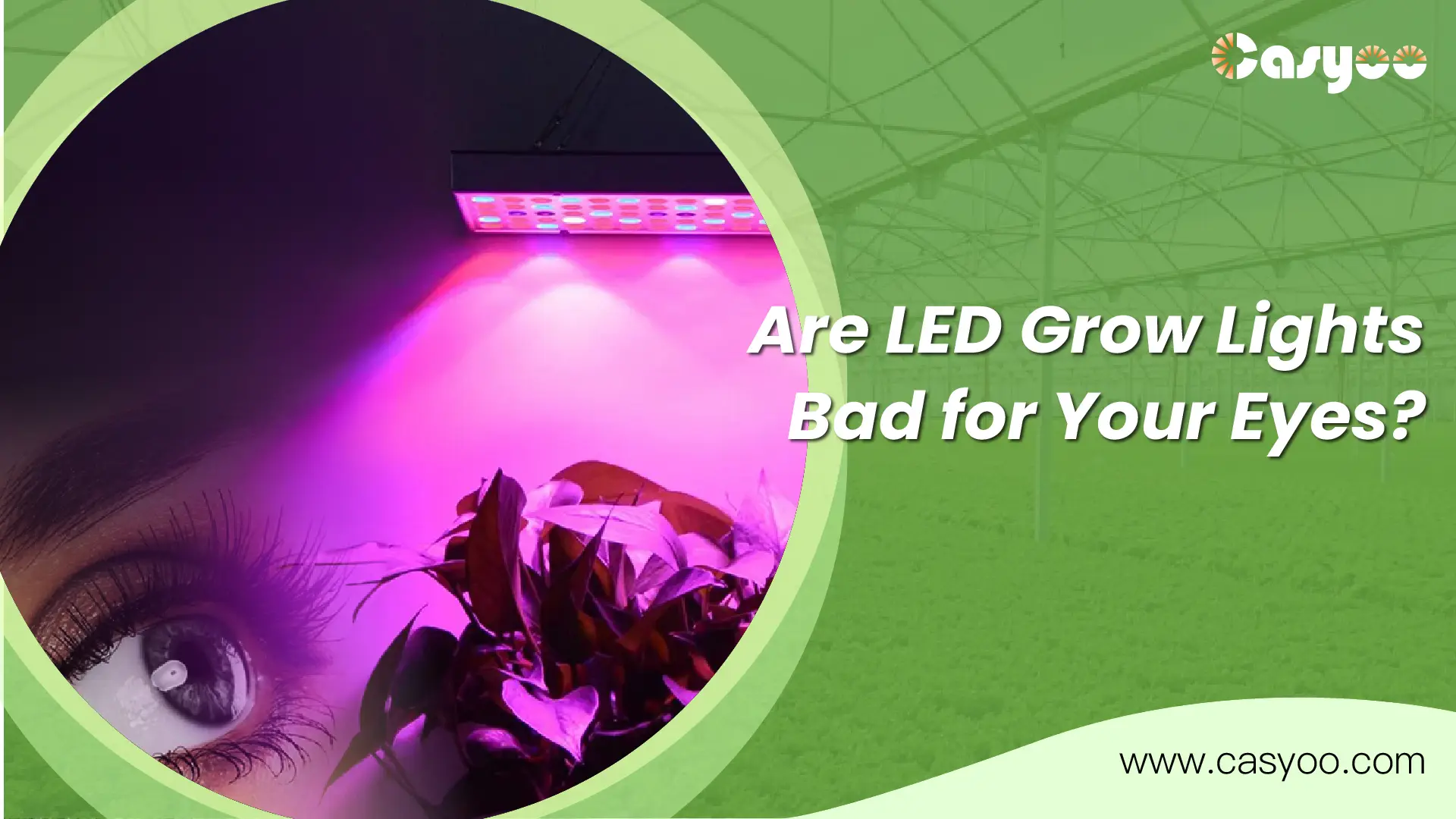As the popularity of gardening continues to rise, so too has the use of LED grow lights. However, many growers wonder whether long-time exposure to LED grow lights is safe for their eyes. In this blog, we will explore whether LED grow lights are bad for your eyes.
How do eyes process light?
The way the human eye processes light is complex. Simply put, photoreceptor cells, namely rods and cones, allow us to see clearly and distinguish colors, motion, and shapes. They are all stimulated by different wavelengths. This is why natural or white light allows humans to see clearly.
The human eye can only see a small part of the full electromagnetic spectrum, which exists between the shorter wavelengths of ultraviolet (UV) and the longer wavelengths of infrared light. UV and blue light are of the greatest concern.
Do HPS grow lights cause eye damage?
Some growers prefer HPS lights to LEDs because of their intensity, but HPS lights are so harsh that they can cause irreversible damage to your vision.
In the sunlight, we are exposed to UVB and UVA. Only a little UVC light arrives in the ground thanks to the earth’s atmosphere. This is not the case with indoor HPS grow lights, HPS lamps emit UVA, UVB, and UVC rays. UV rays are harmful to human vision, causing problems with color perception, night vision, and cataracts. If you grow crops with HPS grow lights, you should buy a pair of HPS grow room glasses, as regular sunglasses do not provide UVC protection.
Do LED grow lights hurt the human eye?

Intensity, wavelength, and duration affect the safety of any grow light. If we look directly at the light, any intense light can harm our eyes, but it is easily avoided by not staring at your light.
For example, you stare at the bright light. When you blink, a brief glance can cause strange patterns in your vision. Staring at it for an extended period can hurt your eyes. This is true of any bright light, whether LED or traditional fixtures. Also, being too close to plants can burn them. So keep the grow lights at a proper distance from the plants, you can refer to this blog.
Most wavelengths are harmless. However, LED grow lights that emit UV rays and blue light are harmful to your eyes. This includes fluorescent grow lights, HPS grow lights, and MH grow lights. On the other hand, pure red light is harmless unless the intensity is very high.
Do LED grow lights emit UV light?

Yes. Due to the use of additives and phosphors in the manufacturing process, LED grow lights emit low levels of UV radiation, mainly UVA. However, this amount of UV radiation is safe and can contribute to healthy plants. In addition, these lights emit very little UVB, which is far below the safety limit.
What effects do UV rays have on the eyes?
Concerns about ultraviolet rays are related to the increase in eye diseases such as cataracts. Cataracts impair millions of people’s vision and drive up medical expenses annually by billions of dollars, even though they can be cured with modern eye surgery.
What effects does blue light have on our eyes?

Blue light is the energy-rich part of the electromagnetic spectrum with a wavelength range of between 380 and 500 nm. Blue light is omnipresent, be it in sunlight or artificial lighting. It has relatively high energy and has a significant effect on the development of crops. Essentially, blue light serves as a growth regulator.
The wavelength of blue light is the shortest, which means it has the most damaging power. The photoreceptor cells in the retina can be harmed by excessive blue light, leading to macular degeneration and even irreversible vision loss. Nevertheless, unless you are exposed to too much blue light, this is uncommon. But it is always better to be cautious, blue light will have a negative impact on our vision anyway, and our corneas are not very good at blocking blue light. Therefore, it is vital to take measures to protect our eyes.
What effects does LED light flickering have on the eyes?
Prolonged exposure to LED light flickering can cause symptoms such as eye movement dysfunction, double vision and headaches. In addition, LED light flickering can affect our productivity, concentration, comfort, and even emotional well-being. With long-term exposure to flicker, you may suffer from persistent headaches and migraines, and even cause epileptic seizures in non-epileptic patients.
LED light flickering can be easily solved by replacing or upgrading bulbs, or dimmer switches. For more details, click here.
How to protect your eyes in a grow room?
Don’t look directly at the light.
Blue light and UV light can be harmful to our eyes. The degree of harm caused by LED lights is related to the spectrum and intensity. Any strong light will cause damage to your eyes if you look directly at it. So the solution is simple, don’t stare at your lights.
Wear grow glasses
If you are a professional grower, steer clear of using regular sunglasses. They are not made for grow lights. This means that your plants will look unnatural if you put on regular sunglasses.
Professional grow glasses will make your plants look completely natural with them. This makes it easier to check your crops and detect any signs of problems in time.
About us
Casyoo has more than 17 years of experience in the LED grow light industry. Whether you have questions about grow lights or want to seek advice, feel free to contact us. Casyoo is 24/7 available to help you.





